Hero Wars Heroes Tier List Analysis and Insights
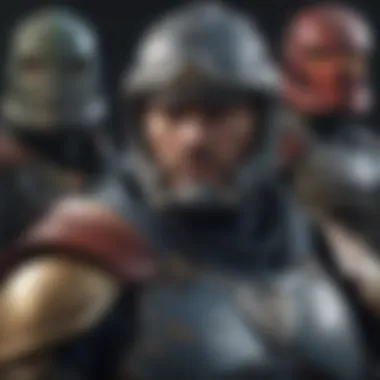
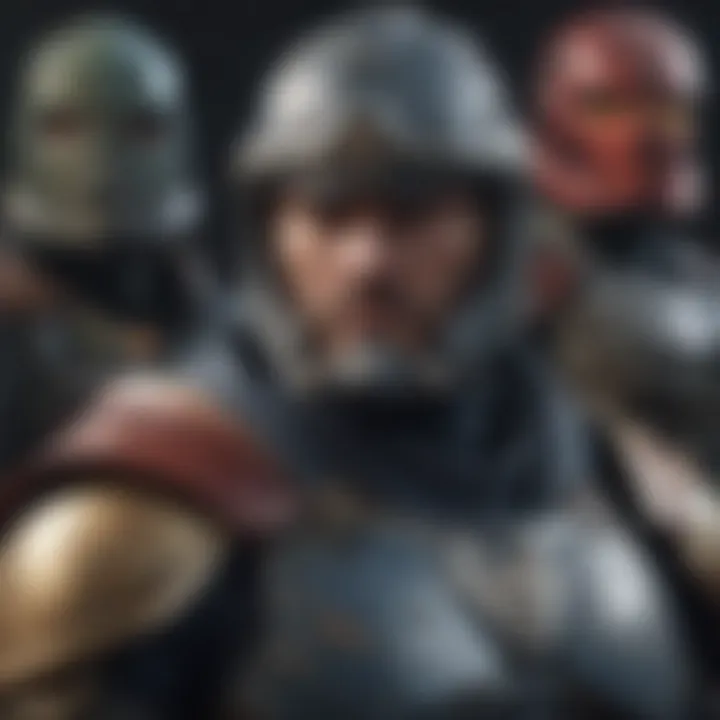
Intro
In the sprawling world of mobile gaming, few titles have gained traction as swiftly as Hero Wars. What draws countless players into its enchanting embrace isn't merely the allure of battle, but rather the strategic depth that accompanies its character-driven gameplay. To truly thrive in this realm, understanding the heroes tier list becomes essential, weaving through strengths, weaknesses, and synergies that define successful gameplay.
At its core, this article aims to navigate the maze-like intricacies of the Hero Wars heroes tier list, shedding light on not only character classifications but also the evolving meta trends that dictate competitive scenarios. Whether you’re a newcomer eager to carve a path or a seasoned player striving to maintain your edge, having a grip on these elements can reshape your understanding and approach to gameplay.
Moreover, as the gaming landscape constantly shifts due to updates and community strategies, learning how to adapt your hero choices will be crucial. So, let’s dive deeper into not only the characters themselves but also tactics that can elevate your gaming experience, ensuring that you are well-equipped for the challenges that lie ahead.
Understanding the Tier List Concept
In the realm of Hero Wars, grasping the concept of a tier list is crucial for any player looking to elevate their gameplay. A tier list acts as a navigational map, guiding players through the vast universe of heroes available and highlighting which characters shine brightly in various contexts. It encapsulates extensive analysis based on hero performance, abilities, and synergies, ultimately providing a framework that players can leverage to make informed decisions. Understanding this concept can help players craft strategic plans, assemble powerful teams, and ultimately boost their chances of victory.
Defining a Tier List
A tier list categorizes heroes into distinct levels according to their effectiveness in the game. While most could throw out terms like "S-Tier" or "D-Tier" without knowing what they truly mean, the reality is each classification demands scrutiny.
- S-Tier denotes the crème de la crème—these heroes consistently outperform their peers.
- A-Tier heroes are solid options offering much value but might lack the raw power of S-Tiers.
- B-Tier and C-Tier characters can be useful, yet they typically require special strategies for optimal use.
- D-Tier heroes often struggle to find a place in competitive play, although they might shine in niche scenarios.
Such classifications aren't just arbitrary labels; they reflect a deep dive into statistics, win rates, and even player feedback. Considering that Hero Wars frequently updates its content, these lists serve as a living document, evolving along with the game itself.
Importance in Gameplay Strategy
Knowing how to interpret a tier list can significantly shift a player's approach to Hero Wars. Here are a few facets to consider when crafting gameplay strategies based on tiered rankings:
- Character Selection: The heroes you choose can make or break your in-game performance. Opting for S-Tier heroes generally results in more favorable matchups.
- Team Dynamics: Understanding how heroes interact is vital. S-Tier heroes might enhance A-Tier allies, ensuring that your overall team performance remains robust.
- Meta Awareness: The competitive landscape evolves constantly. Staying attuned to tier list updates assures your strategy remains relevant and effective.
- Resource Allocation: By focusing on higher-tier heroes, players can optimize resource investment toward team development, rather than dispersing efforts on underperforming characters.
Utilizing tier lists effectively is about competency and finesse in understanding your characters, their strengths, and their vulnerabilities. Mixing up your hero selection according to what's trending in the meta will not only enhance your experience but also create a compelling narrative during each battle.
"In Hero Wars, true mastery isn't just about individual hero power; it's about crafting the perfect synergy that outmaneuvers the competition."
As we delve deeper into specific heroes and their classifications, knowing the ins and outs of tier lists will continue to be a fundamental aspect of the strategic gameplay in Hero Wars. Players should constantly refer back to these lists as they evolve, ensuring their strategies remain sharp and adaptive.
Overview of Hero Wars
In the ever-expanding universe of mobile gaming, Hero Wars stands out as a playground for strategy enthusiasts and fantasy lovers alike. This mobile role-playing game captures the imagination and requires players to not only rack their brains but also to engage in tactical decision-making. As we explore the Overview of Hero Wars, this section serves as a keystone in understanding the tier list and how it influences gameplay.
The essence of Hero Wars revolves around controlling a diverse roster of heroes, each with unique abilities and attributes. Players must master the intricacies of character management, team synergies, and the overall game mechanics to carve their path to victory. For newcomers and seasoned players alike, understanding these core components can provide a solid foundation for evaluating hero performance.
Game Mechanics
Diving into the game mechanics of Hero Wars unveils layers of complexity that can either make or break your in-game experience. Players are tasked with assembling a team of heroes who operate based on various combat mechanics, each linked to their abilities, power levels, and elemental affinities.
- Combat Dynamics: Battles rely heavily on real-time strategy, where each decision counts. Players can position heroes on the battlefield, considering both the timing of attacks and the casting of abilities. This dynamic means that knowing when to unleash a hero's ultimate can turn the tide in an otherwise lost match.
- Upgrading Heroes: Players have the opportunity to upgrade their characters through experience points and item collection. It's a constant cycle of leveling up, empowering heroes, and choosing the best gear. This enhancement process is crucial for maintaining an edge over opponents, especially in higher tiers where competition stiffens.
- Resource Management: Just like any well-oiled machine, resource management is key to progress. Players need to balance how they spend their currency and items on heroes versus upgrades. Each choice can lead to different levels of performance in combat scenarios.
Understanding these mechanics is essential to fully grasp the tier list nuances that follow. Knowing how heroes interact dynamically in combat and the importance of upgrades can shift one's gameplay significantly.
Character Classes and Roles
The character classes and roles within Hero Wars introduce another layer of strategic depth. Each hero fits into a role that defines their play style in battles, from attackers to defenders, and everything in between.
- DPS (Damage Per Second): These characters focus on dealing massive damage quickly and efficiently. For instance, Astaroth, who might have a formidable attack speed, can decimate enemies before they even realize it.
- Tanks: These heroes, like Galahad, are designed to absorb damage and protect squishier allies. They often have high health and defensive stats, making them stalwarts on the battlefield.
- Support: Characters in this category, such as Nebula, provide healing or buffs to enhance team performance. A well-placed heal or timely shield can often save the day.
- Hybrid Roles: Some heroes possess attributes of multiple roles, adapting their strategy based on team composition and enemy types. Navigating this selection helps in forming a balanced team, ensuring that all bases are covered.
The Hero Wars Heroes Tier List
Understanding the Hero Wars Heroes Tier List is critical for players keen on mastering the game. The tier list serves as a comprehensive classification system, ranking heroes based on their effectiveness in various gameplay scenarios. This ranking not only highlights relative strengths and weaknesses of characters but also helps in strategizing team compositions.
Importance of the Hero Wars Heroes Tier List
The tier list provides a transparent framework that players can use to make informed decisions, enhancing their chances of success in battle. Players often find themselves pondering over which heroes to invest time and resources into. By consulting the tier list, they can identify powerful characters that can turn the tide of combat. Additionally, this list evolves over time as game dynamics change, making it essential for players to stay updated on the current standings. By focusing on S, A, B, C, and D tiers, players can maximize their team’s potential.
S-Tier Heroes
S-Tier heroes are the cream of the crop. These characters shine brightly in both various modes and circumstances, often exhibiting superior abilities and survivability. Let’s take a closer look at some of their standout attributes:


- Exceptional Damage Output: Many S-Tier heroes have high damage-dealing abilities that can wipe out foes quickly.
- Versatile Skill Sets: They often possess skills that can adapt to multiple situations, making them valuable in both offense and defense.
- Team Synergy: These heroes typically work well with a wide variety of other characters, enhancing the overall effectiveness of any team they join.
"The right mix can take an average team to astounding heights."
A-Tier Heroes
A-Tier heroes hold their own in battles but may not be as dominating as S-Tier heroes. Still, their balance of abilities makes them solid choices for many players. Key points include:
- Reliable Contributors: A-Tier heroes still boast excellent utility and can play crucial roles in effectively taking down enemies.
- Solid Damage Dealers: While they may not pack as much punch as S-Tier, they can consistently deal significant damage in combat.
- Good Team Fit: They work well alongside S-Tier characters, complementing their abilities and bolstering overall team performance.
B-Tier Heroes
B-Tier heroes are regarded as having room for growth, and while not the top choice, they hold certain advantages in specific contexts. Noteworthy aspects include:
- Situational Strengths: Certain B-Tier heroes can shine in particular matchups due to their unique abilities.
- Budget-Friendly Options: For new players or those on a budget, B-Tier characters can still contribute positively to their team dynamics without heavy investment.
- Learning Experience: Playing with B-Tier heroes can help players grasp game mechanics better, paving the way for using more potent characters down the line.
C-Tier Heroes
C-Tier heroes generally fall short of being optimal choices but can find niche applications in specific scenarios. Their relative features are:
- Specialized Skills: Sometimes they possess skills that excel in particular situations, often making them valuable for advanced players who understand their capabilities.
- Low Investment Needed: They can be easier to obtain and level up, allowing players to experiment without committing excessive resources.
- Flexible Playstyles: Players who can adapt their strategies may find unique ways to utilize C-Tier heroes.
D-Tier Heroes
D-Tier heroes are often seen as lacking overall effectiveness, but they still have a place in the game. Consider these points:
- Limited Usability: These characters may struggle to compete effectively in higher levels, often requiring specific setups to show any potential.
- Learning Tools: They can serve as practice fodder for newer players to get comfortable with game dynamics, setups, and strategies.
- Edge Cases: Occasionally, D-Tier heroes might be the key to winning in very niche situations, often relying on cleverly orchestrated tricks by players who know how to exploit game mechanics.
Analyzing the tier list and understanding each hero’s role is fundamental to developing a winning strategy in Hero Wars. As players navigate the game, their choices will directly reflect on their gameplay experience. Thus, a sharpened focus on the tier list paves the way for crafting effective teams and achieving gameplay objectives.
Analyzing S-Tier Heroes
S-Tier heroes represent the crème de la crème in the Hero Wars universe. These characters embody a blend of exceptional attributes and pivotal roles that can drastically influence the outcome of battles. Engaging with S-Tier heroes is crucial as they often provide the backbone of any competitive lineup, offering unparalleled advantages. They not only stand out due to their raw power but also because they serve as a test case for strategic gameplay. By thoroughly examining these heroes, players can glean essential insights that can elevate their own gameplay experience.
Key Attributes and Strengths
When we talk about S-Tier heroes, the first thought should be their key attributes. Generally, these heroes exhibit impressive stats in health, damage, and agility, making them hard to beat. For example, heroes like Astaroth possess robust defensive capabilities while also inflicting substantial damage!
- Versatility: S-Tier heroes can fit within various team compositions, adapting to shifts in gameplay styles or meta changes. Their ability to change lanes or roles mid-battle can catch opponents off guard.
- High Burst Damage: Many S-Tier heroes offer instant damage output through their skill sets. A hero such as K'arkh can deal massive hits, swinging the battle in your favor.
- Survivability: Heroes like Celeste may not just decimate opponents but also survive long enough to make a difference. Their heals or shields add an extra layer of durability that makes them valuable assets on the battlefield.
- Ultimate Skills: Often, it’s the ultimate skills of S-Tier heroes that turn the tide. Understanding the timing and sequencing of these abilities is key to maximizing their impact.
The greatness of S-Tier heroes doesn’t solely lie in their individual strengths; their inherent attributes create opportunities for team-based strategies that can lead to unprecedented victories.
Synergies with Other Heroes
S-Tier heroes shine not just on their own; they thrive when paired with other characters. Their synergies form the fabric of a strong team, allowing players to exploit weaknesses in the enemy's lineup.
- Combination Attacks: Pairing heroes like Julia with Astaroth can amplify the overall effectiveness of their abilities. Julia can deal heavy damage while Astaroth tanks hits, keeping the team safe!
- Support Roles: Some S-Tier heroes have unique supportive traits that can enhance others’ skills. For instance, Martha offers healing and buffs, making her an invaluable ally for any leading hero.
- Enemy Control: Heroes with crowd-control abilities, like Galahad, work well with high-damage characters. Slowing or stunning opponents can create openings for S-Tier heroes to unleash their full potential.
- Elemental Tactics: Understanding elemental strengths can also help in team formation. Mixing water, fire, and earth heroes in your S-Tier line-up can confound adversaries and create new layers of strategy.
The interplay between S-Tier heroes in team dynamics is what truly elevates their value in any match. Not only do they stand strong individually, but they also magnify the positives of their companions, presenting a united front that can lead to dominating victories.
"A well-constructed team with S-Tier heroes can exploit the opponent's weaknesses and create overwhelming pressure."
With a balance of strength and strategy, S-Tier heroes represent the pinnacle of gameplay in Hero Wars. Understanding their attributes and synergies is fundamental for any serious player aiming for the top ranks.
A-Tier Heroes: A Solid Choice
A-Tier heroes in Hero Wars certainly stand out as a solid choice for players looking to enhance their gameplay. They strike a commendable balance between strength, versatility, and utility within various game modes. When it comes to forming strategies and building teams, knowing which A-Tier heroes to incorporate can be an important decision, making them pivotal assets on the battlefield.
Evaluation of Performance
The performance of A-Tier heroes often speaks volumes when you pit them against lower-tier characters. These heroes generally boast impressive stats that can turn the tide of battle in your favor. They come equipped with a well-rounded skill set that provides both offensive and defensive capabilities.
For instance, an A-Tier hero may have abilities that deal damage while also providing supportive effects to allies. This dual functionality allows them to excel in varied circumstances, whether it’s burst damage in a raid or longevity in longer battles. Players might observe the difference in performance against S-Tier enemies or during competitive events where every point counts.
"The key attribute of A-Tier heroes is their flexibility in team compositions, allowing for strategic adaptations during gameplay."
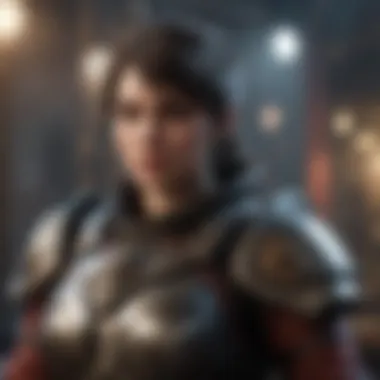
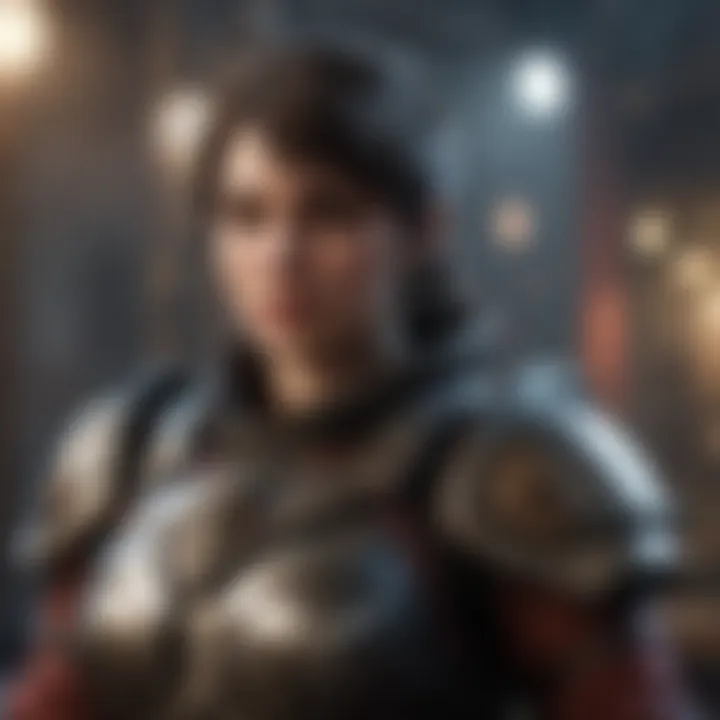
Moreover, the nuances of their attacks and defensive mechanisms can be critical in high-stakes scenarios, especially when facing off against formidable foes. It’s not just about raw power; it's about making the best use of their abilities based on situational demands, and that’s what separates them from B-Tier heroes.
When to Utilize A-Tier Heroes
Utilizing A-Tier heroes can offer significant advantages in specific conditions. Knowing when to deploy these characters requires an understanding of the battlefield dynamics and your opponents’ lineup.
A-Tier heroes shine brightly in the following scenarios:
- Team Synergy: When your team composition needs a reliable backbone to support other heroes, A-Tier heroes often fit the bill. They can mesh well with both S-Tier and B-Tier heroes, thus creating balanced and formidable lineups.
- Versatile Game Modes: In both PvP and PvE situations, A-Tier heroes often adapt better than their lower-tier counterparts. Their overall capabilities make them suitable for various roles, enabling them to jump between offensive and defensive tasks as needed.
- Resource Management: If you're in a prolonged battle or a resource-intensive event, employing A-Tier heroes can lead to better resource conservation over time. Their efficiency and resilience can stretch your team's durability, ensuring you maintain an edge.
Understanding these elements increases the relevance of an A-Tier hero during gameplay, allowing players to make informed choices that could lead to victory. In essence, these heroes serve as a critical component when forming strategies, consistently delivering performance that champions the cause.
B-Tier Heroes: Room for Growth
B-Tier heroes represent a curious intersection in the Hero Wars universe. They are not the shining stars of the game, yet they possess distinctive attributes that can be harnessed for effective gameplay. Understanding the nuances of these characters is essential, particularly if players wish to deepen their strategic repertoire. This section scrutinizes how leveraging B-Tier heroes can yield profitable outcomes, providing players with essential insights into their strengths, weaknesses, and unique applications.
Strengths and Weaknesses
B-Tier heroes may not top the charts, but they come with their fair share of perks that shouldn’t be ignored. For instance, their skills can often complement the abilities of more powerful heroes, creating synergy that can turn the tide in battles.
Strengths:
- Flexibility: These heroes can adapt to various team compositions, which allows players to experiment with different strategies.
- Cost-Effective: Many B-Tier heroes have lower upgrade costs, making them accessible to players who are still building their rosters.
- Learning Opportunities: Using these heroes encourages new players to dive deep into the mechanics of the game, allowing for growth and skill development.
Weaknesses:
- Limited Impact: In high-stakes battles, their abilities might not shine as brightly compared to their S or A-Tier counterparts.
- Lack of Versatility in some Situations: Certain B-Tier heroes can struggle against top-tier teams, revealing a degree of inflexibility in their strategic applications.
Unique Situations for Utility
Despite their rankings, B-Tier heroes can shine in specific scenarios, often catching opponents off guard. They are perfect for niche strategies, making them useful when the situation calls for it. Here are a few examples of how and when these heroes can be effectively utilized:
- Countering Specific Teams: In matches where opponents heavily rely on a particular hero or strategy, a B-Tier hero's unique skills may provide unexpected counters.
- Filling Gaps in a Team: Sometimes, a deployment lacks a critical ability due to the absence of a better hero. Here, a B-Tier hero can step in, offering just what the team needs to balance itself out.
- Element of Surprise: If an opponent largely prepares to face dominant A or S-Tier foes, including a B-Tier hero can throw a wrench in their expectations, giving players a potential edge.
C-Tier Heroes: Niche Applications
In the extensive world of Hero Wars, C-Tier heroes often find themselves underappreciated. These heroes may not shine as brightly as their higher-tier counterparts, but they have unique abilities and situations where they can tip the scales in your favor. Understanding the role of these C-Tier heroes is not just an exercise in allocation; it's about recognizing the potential hidden within their constrained rankings.
Assessment of Capabilities
When evaluating C-Tier heroes, it’s crucial to look beyond the surface. While they may lack the overwhelming power or versatility present in A or S-Tier heroes, many possess specific abilities that can turn a tide in niche scenarios.
For instance, consider Ziri. On paper, Ziri might be seen as a second-rate choice compared to the elite heroes like Astaroth or Helios. But what she brings to the table is a unique set of skills that may cater well to certain strategies. Her ability to apply crowd control in specific combinations can disrupt enemies who heavily rely on a single target. In battles where opponents favor a clustered formation, characters like Ziri can provide unexpected pressure.
Here are a few points to keep in mind when assessing C-Tier heroes:
- Situational Utility: They might excel in certain situations against specific enemy lineups.
- Specific Synergy: They can often become valuable cogs in the right team dynamics.
- Cost Effectiveness: C-Tier heroes are usually easier to level up, making them accessible to players who are just starting.
Strategic Deployment in Gameplay
Deploying C-Tier heroes requires a measured approach. They may be niche, but when used appropriately, they can complement higher-tier characters and create synergy born out of versatility.
Consider using Jorgen not in a main damage-dealer role, but as a situational support to a team packed with heavy hitters. His abilities can interrupt enemies and manipulate the battlefield tempo, allowing your key characters to shine. While he's not at the frontlines, he shapes the clash effectively, facilitating a cohesive strategy that capitalizes on the strengths of stronger characters.
To effectively implement C-Tier heroes in your lineup, consider the following:
- Study Opponent’s Compositions: Before entering a battle, examine the strengths and weaknesses of the enemy team and pivot to embody tactical adjustments.
- Focus on Team Roles: Use C-Tier heroes to fill gaps in your lineup. If a heavy tank or crowd-control effect is missing, C-Tier can help where it counts.
- Experiment in Various Modes: Some heroes may shine in Arena but flop in Guild Wars or other game modes. Test various team combinations to find the sweet spot.
"In a game where every hero counts, understanding your C-tier champions is like finding gold in the rough."
D-Tier Heroes: Understanding Limitations
D-Tier heroes often raise eyebrows among players, not just for their ranking but also for the lessons they impart about hero selection and gameplay strategy. While these characters may not shine as brightly as their higher-tier counterparts, they play a significant role in understanding the broader game dynamics, especially for those eager to refine their approach to team composition. Analyzing D-Tier heroes reveals critical insights into character balance and highlights areas where clever strategy can turn the tide even when using less favorable options.
Factors Behind their Ranking
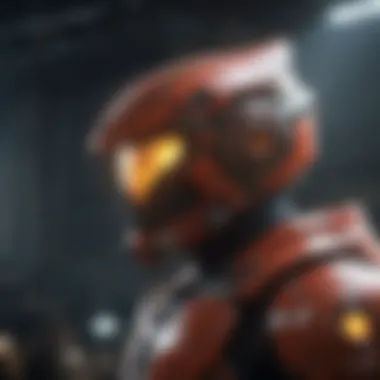
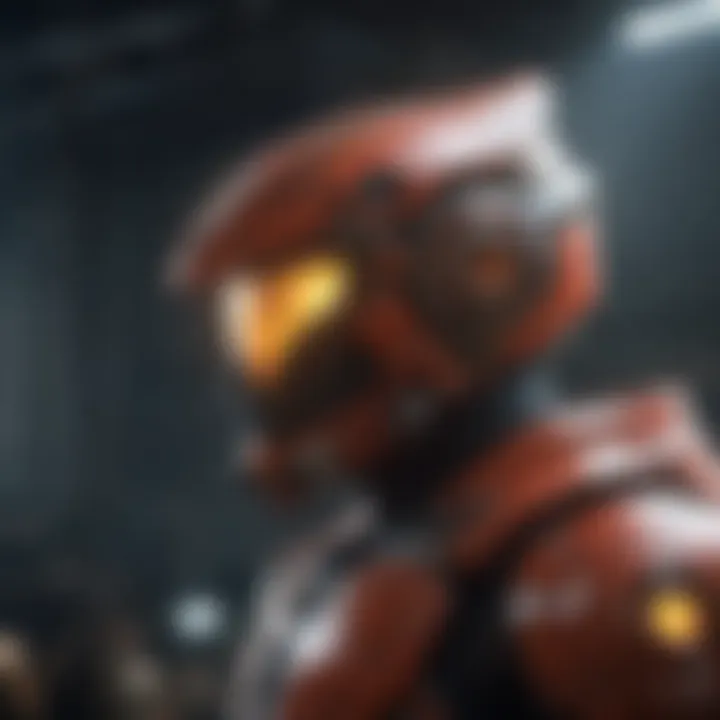
Several factors contribute to why a hero might find themselves nestled comfortably in the D-Tier. Understanding these elements can aid players in making informed decisions:
- Statistical Disadvantage: Many D-Tier heroes possess lower base stats which impede their ability to perform well in battles compared to S-Tier or A-Tier heroes. This can limit their damage output or survivability during key encounters.
- Skill Set Limitations: The abilities of D-Tier heroes often lack synergy with other strong characters. Limited crowd control or healing capabilities render them less effective in team assaults or prolonged engagements.
- Contextual Weakness: Certain heroes may falter in specific metas. With evolving gameplay strategies, a hero once considered viable can easily slip down the rankings as new characters or tactics emerge. Players should keep an eye on how the meta shifts and how it applies to these lower-tier heroes.
- Player Experience Levels: Some players may find themselves drawn to D-Tier heroes simply due to aesthetics or personal preference. Their charm or unique backstories may lead to poor gameplay choices, overshadowing the statistical realities of their effectiveness in combat.
Possible Use Cases
Despite the challenges these D-Tier heroes face, they still have roles to play. Here are some possible scenarios where D-Tier heroes can be beneficial:
- Budget Team Composition: New players, with limited resources, might find it tough to obtain top-tier heroes. Using D-Tier characters can still create a functional team provided players focus on synergies and strategies that compensate for their weaknesses.
- Situational Counter: Certain battles may require unique strategies where a D-Tier hero’s abilities can unexpectedly shine, especially when pitted against teams that lack specific defenses.
- Experimental Teams: Players often want to try new combinations. Using a D-Tier hero allows the exploration of unconventional strategies without the heavy investment of resources. This can lead to surprising victories against complacent opponents who may underestimate these heroes.
- Fulfilling Specific Team Roles: In niche situations, a D-Tier hero may fulfill a unique team role that higher-tier heroes cannot, such as a specific debuffer or elemental attacker that counters a particular enemy’s composition.
In summary, while D-Tier heroes may seem like the underdogs of the Hero Wars universe, their inclusion in gameplay should not be dismissed outright. Instead, understanding their limitations can empower players to wield them effectively when circumstances align favorably. A savvy gamer can always find a way to make the most of what they have, turning even the meekest of characters into surprisingly effective pieces on the battlefield.
Meta Shifts and Their Impact
In the realm of gaming, the term meta signifies the current state of play, shaped by the collective strategies and hero utilizations favored by the player base. The ongoing evolution of this meta in Hero Wars is pivotal, influencing how players select their heroes and craft strategies. Understanding these shifts is akin to being in tune with the tides; it helps players navigate the tumultuous waters of game dynamics.
Identifying Evolving Trends
As time marches on, every patch or update brings its own set of changes, which can ripple through the existing tier lists. Identifying these trends is crucial. For instance, suppose a certain hero receives a buff that enhances their damage output or healing capabilities. Suddenly, this hero's viability skyrockets. Likewise, if a particular hero's skill set starts to counter popular strategies, they may emerge as a hot pick in competitive play.
Observing these changes requires not just perception but also analysis of the battle reports, forum discussions, and community sentiment. Reddit threads often spark debates among players, uncovering insights about who is currently reigning supreme or falling out of favor. Regular visits to platforms such as Reddit can foster a deeper understanding of how shifts occur and which heroes are storming up or down the tiers.
Adjusting Strategies Based on the Meta
Once you’ve identified the changing trends in the meta, the next step is to adjust your strategies accordingly. An effective player remains flexible, ready to tweak their team composition when necessary. This might involve swapping out a B-tier hero for one that suddenly shines in the current landscape. Perhaps your trusty tanks are now overshadowed by a new A-tier hero that holds impressive crowd control abilities. Acknowledge when to reevaluate your team dynamics, ensuring that you’re not just going through the motions.
Furthermore, adapting doesn't just stop at changing heroes. Consider revising playstyles as well. If healing heroes are now in the spotlight due to increased damage threats, it might be wise to incorporate heroes like Martha or Celeste into your formation to maintain longevity in battles.
In essence, the onus is on the player to keep their finger on the pulse of the game, allowing them to fully harness the potential of the heroes in this ever-evolving tier list. A proactive approach ensures that you don’t just react to changes, but rather anticipate them, creating a position of strength in any competitive scenario.
Forming Effective Teams
Creating a well-rounded team in Hero Wars isn’t just a trivial pursuit; it’s the cornerstone of strategic gameplay. The synergy between heroes can make or break your experience, impacting both offensive strategies and defensive capabilities. When you grasp the importance of forming effective teams, you're effectively laying the groundwork for success in various encounters, whether in the Arena or during Guild Wars.
Balancing Roles Within a Team
Every hero in Hero Wars comes with its own set of skills and playstyle, which is why balancing roles is crucial. You have your tanks, damage dealers, and healers—all the characters play their part in ensuring the team functions smoothly.
- Tanks are like your front line, absorbing damage and keeping the enemies at bay. Heroes like Astaroth or Galahad excel in soaking up hits while providing utility.
- Damage dealers, such as Kirk or Lian, focus on inflicting maximum damage. Their skills should ideally complement the tank’s role, allowing for sustained attacks while minimizing risk.
- Healers like Marcus or Aurora ensure your team stays in the fight longer, providing vital support as they recover from ambushes.
Striking a proper balance means considering your team composition as a whole and ensuring that no role is neglected. Leaving out a healer, for instance, can lead to fast depletion of health during intense battles, forcing you to rethink your strategy mid-game. Well-balanced teams often lead to victories, where variety unlocks potential and counters can be developed against opponents’ strategies.
Complementary Abilities for Success
Beyond just selecting heroes for roles, it’s the complementary abilities that can turn the tides of battle. When thinking of synergy, picture how certain skills interconnect and amplify each other. For instance, pairing Kirk’s damage output with Marcus’s healing can create a sustainable storm of destruction on the field.
During team formation, ask yourself:
- How does each hero’s ultimate ability interact with others? For example, a hero like Jhu can capitalize on the crowd control effects generated by yoour tanks, maximizing his damage ability.
- Can my healer regenerate health while others deal damage? Aligning abilities that enhance recovery for high-damage heroes ensures longevity in fights.
- Are there elemental affinities that can be leveraged? Leveraging heroes with synergistic skills often gives the upper hand by exploitng the enemies' weaknesses.
"The secret of getting ahead is getting started." In the realm of Hero Wars, the sooner you analyze hero abilities and potential pairings, the more games you will win.
The End
The conclusion of this article holds substantial value for any player invested in Hero Wars. It ties together the myriad insights and analyses provided throughout, allowing for a clearer understanding of how each hero fits into the broader landscape of the game. By summarizing key points, players can revisit the strengths and weaknesses of various tiers, ensuring they make informed decisions when configuring their teams. This section isn’t merely a wrap-up; it serves as a strategic guidepost that can enhance gameplay experience.
Recap of Key Insights
Reflecting on the core themes presented in our journey through the tier list is crucial. The tier list itself reveals not just a ranking but a roadmap for players to navigate their hero selection process:
- S-Tier Heroes: These characters, often game-changers, exhibit remarkable power and versatility. Knowing who occupies this space can significantly influence a player's success.
- A-Tier Heroes: Strong and reliable, these heroes are fantastic for several team compositions, offering good performance without the unpredictability.
- B-Tier Heroes: While they have potential, B-Tier heroes need careful handling and synergy to shine. Their uniqueness can bring unexpected advantages when used in specific contexts.
- C and D-Tier Heroes: Often overlooked, these tiers can still provide breadth to gameplay strategies in niche situations. Understanding when and how to deploy them can be vital for skilled players looking to catch opponents off-guard.
"Effective gameplay lies not only in the champions you choose but also in the understanding you have of their capabilities."
Future Implications for Players
As the landscape of Hero Wars continues to evolve, so do the strategies players will need to embrace. Future meta shifts could alter the dynamics of hero performance, prompting adaptations in team formations and playstyles. Players need to stay alert to evolving trends and community insights, ensuring they are attuned to how new updates or changes affect hero rankings and synergies.
- Emerging Characters: With every new character release, the balance of the tier list may shift. Players should continually assess the integration of new heroes into their existing strategies.
- Community Engagement: Keeping an eye on platforms such as reddit.com or facebook.com can provide valuable insights from other players regarding optimal team compositions and evolving strategies.
- Revisiting Strategies: Players would benefit from regularly re-evaluating their team compositions in light of the insights gathered from this article and the shifting meta, always seeking to refine their gameplay.
This approach not only enhances individual gaming experience but also fosters adaptability, which is essential in a game that thrives on strategic maneuvering. Thus, the knowledge gleaned from understanding the tier list can become a cornerstone of an engaging gaming journey.



